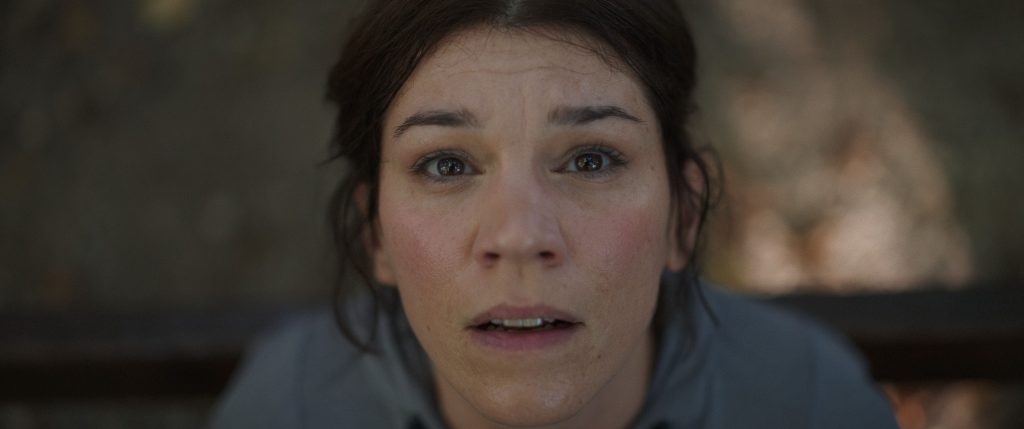Trauma Leaves Traces
Turić’s Elegant Debut Explores Resting Places

Barren trees bathed in ominous fog, a thunderstorm looming on the horizon, and a woman in a yellow raincoat taking photos of seemingly inconspicuous stones with peculiar carvings. Why is she enthralled by them? What purpose do they serve? Traces, the feature debut of Croatian director Dubravka Turić, focuses on the protagonist’s quest for answers, both for the benefit of the academic community and her own peace of mind.
Middle-aged Ana (Marija Škaričić), who struggles to accept the marks vitiligo has traced on her body, is an established anthropologist from a large, well-off family. She spends her days writing books that no one — by her own account — is reading, caring for her father (Mate Gulin) and not much else; her inner world seems as mysterious as the dark and stuffy rooms Turić consistently places her in. Self-conscious and introverted, Ana feels most at ease researching her latest source of wonder: the symbolism of Slavic funeral rituals and their remnants found on the mirila – stone monuments to the deceased indicating the location of their bodies and ultimately serving as a home for their soul. Her fascination with the stones morphs into a general interest in all traces left on contemporary public surfaces, as evidence of the collective yearning for a safe haven. When the sorrow from her father’s death ripples across her life, she is at first defenseless against the cumulative effect of unresolved trauma, but finds the strength necessary to break old patterns of behavior.
As Ana is developing new coping mechanisms, Turić dichotomizes the story of her life into distinct ‘before’ and ‘after’ chapters. Impersonal city shots (steadily captured by cinematographer Damjan Radovanović) are juxtaposed with vivid panoramas of the countryside, the poignant score (written by Jonas Jurkunas) slowly brightens up, and the attention shifts from Ana’s obsession with the carved stones to delving into her psyche and relationships with others. Škaričić’s acting — transforming from constrained to zestful — completes the puzzle, allowing Ana to fully come alive as a character. While Turić is fairly by-the-book in dealing with Ana’s need to reestablish herself beyond the two parameters defining her life (her profession and the autoimmune disorder she believes she has brought upon herself), the previously central topic of anthropological interest — itself rarely used as a starting point in Balkan contemporary cinema — is slowly obscured. Turić and co-writer Danijel Zezelj only imply the societal implications of the rituals, managing to avoid portraying the mirila as an exotic plot instrument.
A year after the initial observation of the intricately carved stones, Ana has found her peace – her new book on the subject is out and she has stopped covering her vitiligo patches with makeup, opting to authentically assert her presence. In the last scene, she visits the small park behind her childhood home and finally acknowledges how much she has grown. Snow starts falling and Ana steps bravely into the future, leaving only footprints behind.
Jovana Gjorgjiovska
© FIPRESCI 2022
